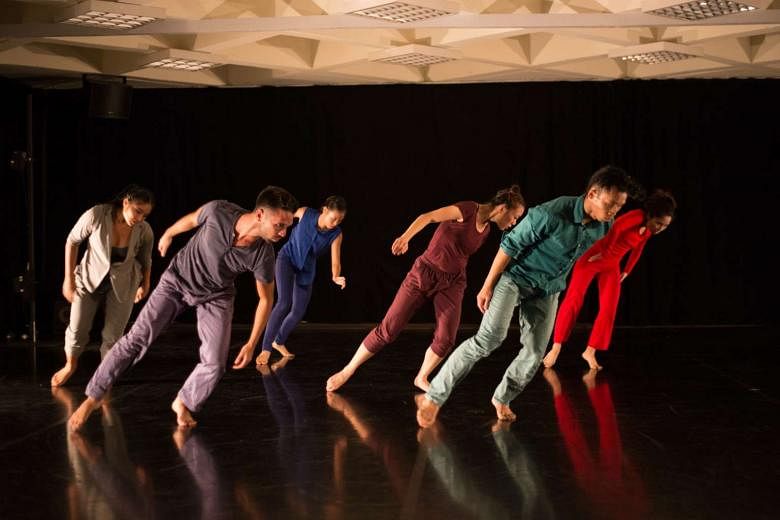REVIEW / DANCE
SIDES 2017
Frontier Danceland
Last Saturday
School of The Arts Studio Theatre
It is almost a guarantee that one will be treated to a display of youthful exuberance when watching a Frontier Danceland show.
In last weekend's Sides performance, the signature camaraderie of the company members was visible.
Relatively new members Adelene Stanley, Sammantha Yue, Daniel Navarro Lorenzo and Faye Tan have settled into their roles comfortably.
The company members always display unity when moving, yet are able to maintain a sense of democratic and playful charm. This aspect has consistently been Frontier's strength.
But Sides fell victim to the plethora of movement. Save for Gabrielle Nankivell and Luke Smiles' work, Focus, constant movement masked the intent of the other two works, instead of highlighting it.
Focus was a simple study of spatial perspective. Set to Smiles' rousing soundtrack, the dancers inserted themselves into different sections of unending movement phrases, highlighting ideas of continuity and disruption.
Formations morphed and the bodies of dancers frozen in mid-motion got dragged across a space.
Care was taken by the choreographers to keep the pace of the movements swift but measured.
In doing this, the mechanical nature of the movements was highlighted, allowing for an unfettered study of space, motion and time.
They were careful not to allow the execution of movement to be the sort that banked on showmanship. This constant movement, however, did the other two works a disservice.
Tung I-Fen's Character Game and Adele Goh's Babel seemed intent on foregrounding the dynamics between groups and individuals. But being in constant motion did not allow this distinction to happen.
In Tung's work, a game format was used. Dancers called out short instructions that would denote specific body parts, directions or a certain number of people.
Seemingly open to real-time interpretation, the responses to these instructions kept banking on the same predictable strategies. Little else was highlighted.
Goh's Babel had numerous engaging moments. But again, the efficacy of each moment was diminished by the constant motion.
It was a pity because the work seemed to be on to something.
Identity-affirming statements such as "I am not Singaporean" were uttered.
Sometimes, the statements were made in the first person, sometimes in plural third person, hinting at ideas of groups, individuals and segregation. But these ideas could not coalesce into something more visible.
For Tung and Goh's works, excessive movement became a dictator that flattened out the quirks and unique traits of the individual.
There was a sincere attempt to let the intricacies and complexities of group-individual dynamics come through but movement imposed itself at too many points and the dancers seemed trapped in responding to the demands of the dictator.

